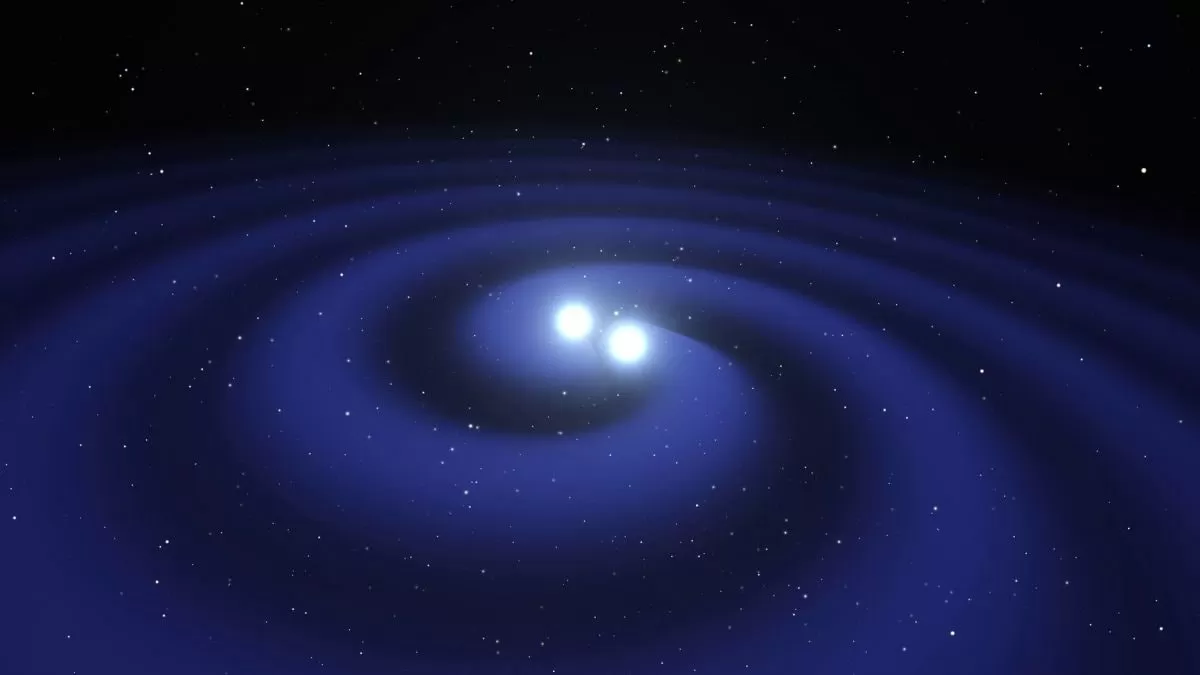Magnetic fields have long been known to play a crucial role in the universe, from shaping the trajectories of charged particles to influencing the formation of stars and galaxies. However, a new study has revealed that these fields may have an even bigger impact than previously thought, particularly in the case of neutron star mergers.
Neutron stars are the densest objects in the universe, with a mass greater than that of our sun packed into a sphere the size of a city. When two of these stars collide, it results in a cataclysmic event known as a neutron star merger. These mergers are some of the most energetic events in the universe, releasing a tremendous amount of energy in the form of gravitational waves.
Gravitational waves are ripples in the fabric of space-time, first predicted by Albert Einstein’s theory of general relativity. They are created when massive objects, such as neutron stars, accelerate or change direction. These waves travel at the speed of light and can be detected by highly sensitive instruments on Earth, providing valuable insights into the nature of the universe.
In recent years, astronomers have been able to detect gravitational waves from several neutron star mergers. However, the interpretation of these signals has been limited by our understanding of the internal structure of these stars. This is where the new study, conducted by a team of researchers from the University of Illinois at Urbana-Champaign, comes in.
Using advanced simulations, the team found that magnetic fields can significantly affect the oscillation frequencies of neutron stars after a merger. These oscillations, also known as modes, are like the ringing of a bell and can provide valuable information about the internal structure and composition of the star.
The researchers found that strong magnetic fields can shift or even suppress these oscillation frequencies, altering the gravitational wave signatures. This discovery could have a significant impact on how astronomers decode post-merger signals and refine their models of neutron star interiors, mass, and evolution.
Dr. Francois Foucart, lead author of the study, explains, “Our simulations show that magnetic fields can have a profound effect on the post-merger behavior of neutron stars. This means that we need to take these fields into account when interpreting gravitational wave signals from these events.”
The study also has implications for our understanding of the role of magnetic fields in the evolution of neutron stars. It is believed that these fields are generated during the formation of the star and can persist for millions of years. However, their exact role in the merger process has been a subject of debate among scientists.
The new findings suggest that magnetic fields may play a crucial role in shaping the post-merger behavior of neutron stars. This could have implications for our understanding of the formation and evolution of these stars, as well as their role in the production of heavy elements in the universe.
Dr. Stuart Shapiro, a co-author of the study, says, “Our results challenge the traditional view that magnetic fields play a minor role in neutron star mergers. They may, in fact, be the key to unlocking the mysteries of these events and providing us with a deeper understanding of the universe.”
The team’s findings have been published in the journal Physical Review Letters and have already garnered attention from the scientific community. Dr. Katerina Chatziioannou, a researcher at the California Institute of Technology, who was not involved in the study, says, “This is a significant step forward in our understanding of neutron star mergers. The results of this study will undoubtedly have a significant impact on future research in this field.”
The study highlights the importance of considering magnetic fields in our models of neutron star mergers and their aftermath. It also opens up new avenues for future research, as scientists work to refine their understanding of these extreme events.
As we continue to unravel the mysteries of the universe, studies like this one remind us of the crucial role that magnetic fields play in shaping the cosmos. With each new discovery, we come one step closer to understanding the complex and fascinating nature of our universe.

